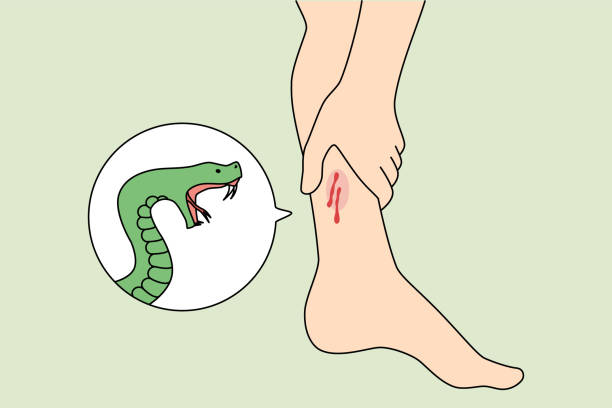Pets and Animals
How to Survive a Snake bite (VIDEO)

As the weather warms up in the Spring and Summer, serpents will start to come out of their Winter hideouts and inevitably, cross paths with humans in the farms, fields, homes and even work places. One of the common misconceptions is that all snake bites are fatal, and that is not true, even though many may end with a trip to the Emergency Room. Stay with us as we explain and give you 5 Survival Plugs on how to survive a snake bite. Meanwhile make sure you subscribe to our channel, like and click the bell icon to be notified on more survival plug videos like this. Now let’s get started:
Study shows that there are only about 15% of snakes worldwide and 20% in the US that are venomous and can cause severe harm to humans through the poison in their venom. Of these, North America has the rattlesnake, coral snake, water moccasin, and copperhead. Other venomous snakes are boomslang, cobra, inland/coastal taipans, black mamba, eastern tiger snake, banded krait, and so on.
Before you proceed, watch our detailed video on how to survive such situation
Most snakes can bite without leaving venom and this is called the dry bite which often results in irritation at the site. The average snakebite will have some symptoms of swelling, bruising, fever, pain and sometimes localized tissue damage. Some people may also not feel the effects immediately. The symptoms may be delayed by hours or even days depending on the site. However, the more dangerous venomous snake bites can cause serious muscle paralysis, loss of limb or fingers, blurred vision, respiratory failure, internal bleeding, shocks, and if not treated death.
- It is best to avoid snakebites, and you can do that by not provoking them if you happen to cross their path. Pay attention to where you walk. A snake likely won’t bite unless you step on it.
- If you are on the field or farm land, carry a walking stick to tap the ground in front of you. If a snake feels threatened, it will be more likely to attack the stick.
- Wear boots and long pants or trousers to protect your ankles, feet and lower limbs
- When you are outdoors in the evenings or nights, wear a headlamp or carry a so you can see snakes before you have a surprise encounter.
If you get bitten, regardless of the Snake that bites you make sure to raise an alarm if anyone is nearby, Call 911 or your local emergency number. But while you wait in pain, here are 5 survival steps to take before the emergency services arrive:
- Move beyond the snake’s striking distance. Do not make the mistake of trying to kill the snake and worsening the situation to several bites. Even a dying venomous snake is still dangerous. Rather try to remember what the snake looks like, so you can describe it to the Emergency Service; and if possible, take a picture of the snake while moving away to a safe place to sit down before the venom drops your blood pressure or breathing and you pass out and possibly hit your head.
- Keep calm and keep your body still because this could slow down the spread of the venom in your body. Do not try to cut the wound or suck out the venom and do not use ice for snakebites, as it can cause further constriction of blood vessels leading to more tissue damage. Instead circle or mark the site of the bite and write down the time next to the mark. If you are not able to write, tell someone around or the local emergency call all the necessary information discussed including your symptoms, and repeat every 30 minutes or so. Majority of snake bites can be diagnosed and treated from your description of the snake and your symptoms.
- Remove all tight clothing and jewelry like rings, watches, bracelets that can become a tourniquet if your limb starts to swell like a balloon. Don’t apply any rope or cloth tourniquet as these would worsen your odds of losing life or limb.
- Position yourself so that the bite is at or below the level of your heart after a snake bite. This helps to slow the spread of venom through your system.
- If you begin to experience signs of anaphylaxis (swelling of face, mouth, or throat; hives; difficulty breathing) use an epinephrine autoinjector (like EpiPen) if you have one. Be careful about taking pain relievers as many may interfere with normal blood clotting system; and when you combine that with the potential blood clotting problem from the venom, it can lead to severe internal bleeding.
And that’s it, the EMS or Emergency department often have anti-venom injections which work by boosting our immune response after a snakebite. This will make you feel better while waiting for further evaluation or special treatment.
I hope you enjoyed our video. Make sure to subscribe, comment, like, and hit the bell icon to be notified about upcoming videos… Thanks for watching. Check out this next Discovery Instincts Video.



















